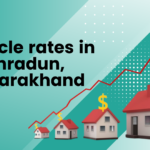What is Annual Value of house property
#realestate #houseproperty #annualvalue
- The calculation of annual value follows different methods for self-occupied properties and let-out properties:
- Factors determining the annual value of a house property
- Categories of House Property
- Conclusion
The annual value of a house property, also known as the annual rental value or annual letting value, is the amount for which the property is reasonably expected to be let out on an annual basis. It is a crucial concept in the context of income tax in many countries, including India.
In India, the Income Tax Act, 1961, defines the rules for calculating the annual value of a house property. The annual value is determined based on various factors, including the property’s actual rent received or receivable, the municipal valuation of the property, or the fair rental value of similar properties in the same locality.
The calculation of annual value follows different methods for self-occupied properties and let-out properties:
Self-occupied Properties: If the property is self-occupied and not let out for rent, the annual value is considered as nil. In this case, no rental income is attributed to the property for income tax purposes.
Let-out or Deemed to be Let-out Properties: If the property is let out or deemed to be let out (i.e., it is not self-occupied but not actually rented), the annual value is determined based on the highest of the following:
1. Actual Rent Received or Receivable: If the property is rented out, the annual value is the rent received or receivable from the tenant.
2. Municipal Valuation: If the property has been specifically assessed by the municipal authorities, and the valuation is available, the municipal valuation is considered as the annual value.
3. Fair Rental Value: If the property has not been rented out and municipal valuation is not available, the fair rental value of similar properties in the same locality is taken into account. This is determined based on factors such as the property’s location, size, amenities, and prevailing rental rates in the area.
The specific rules and calculations for determining the annual value of house property may vary across jurisdictions, so it is advisable to refer to the local tax laws or consult a tax professional for accurate and updated information.
Factors determining the annual value of a house property
Factors that determine the annual value of a house property include:
- Actual Rent Received or Receivable: If the property is rented out, the annual value is generally the rent amount received or receivable from the tenant. This is the most straightforward factor in determining the annual value.
- Municipal Valuation: In some cases, municipal authorities assess properties and assign a specific valuation to them. If the property has been assessed, the municipal valuation becomes an important factor in determining the annual value. This valuation may be based on factors such as location, size, amenities, and other relevant criteria.
- Fair Rental Value: If the property is not rented out and municipal valuation is not available, the fair rental value of similar properties in the same locality is considered. This involves estimating the rental value that a property of similar nature and in a similar location would command in the market. Factors such as property size, amenities, proximity to amenities, and prevailing rental rates in the area are taken into account.
- Self-Occupied Property: If the property is self-occupied and not let out for rent, the annual value is generally considered as nil. In this case, no rental income is attributed to the property for income tax purposes.
Additionally, deductions such as the standard deduction, interest on housing loans, and municipal taxes paid can be claimed to arrive at the taxable income from house property. It is advisable to refer to the relevant tax laws or consult a tax professional for accurate and updated information regarding the annual value of house property and the factors determining it in your specific jurisdiction.
Categories of House Property
In the context of income tax in India, house properties are categorised into the following categories:
- Self-Occupied Property: This category includes properties that are owned and used for residential purposes by the owner themselves or their family. Only one property can be treated as self-occupied, and its annual value is considered as nil for income tax purposes. However, certain deductions related to home loans and interest payments may be applicable.
- Let-Out Property: Properties that are rented out or leased to tenants fall under this category. The annual value of a let-out property is determined based on the actual rent received or receivable from the tenant, municipal valuation (if available), or the fair rental value of similar properties in the same locality.
- Deemed to be Let-Out Property: If a property is not actually let out but has the potential to be rented out, it is considered as “deemed to be let-out.” This category applies to properties that are not used for self-occupation or are not rented out but are treated as if they are rented. The annual value is determined using the same criteria as for let-out properties.
- Under Construction Property: Properties that are under construction and not yet ready for occupation are categorised as under construction properties. In this case, there is no annual value for income tax purposes until the property is completed and ready for occupation or rental.
It’s important to note that the taxation of house property in each category involves various rules, deductions, and exemptions. These may include deductions for home loan interest, property taxes paid, standard deductions, and other relevant provisions. It is advisable to consult a tax professional or refer to the specific provisions of the Income Tax Act, 1961, for accurate and detailed information regarding the taxation of house property in each category.
Conclusion
In conclusion, the annual value of a house property is the amount for which the property is reasonably expected to be let out on an annual basis. It plays a crucial role in determining the taxable income from the property for income tax purposes.




